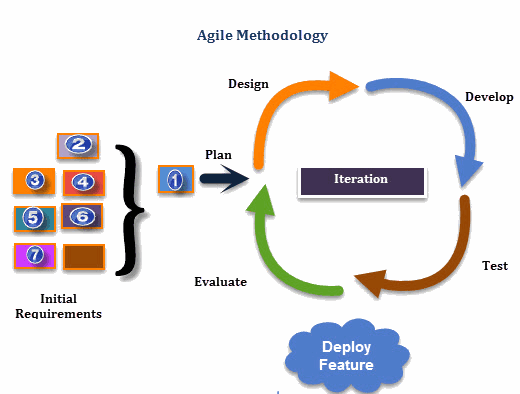Agile in English means quick and well-coordinated in movement. Well, when it comes to the definition of being agile in the software industry, it is defined and understood in different ways by people playing various roles. A developer defines agile as a process that best handles the changing business requirements.
A QA defines it as a process that makes their job easy as testing goes in parallel with development thereby avoiding miscommunications and misconceptions. A Project manager defines agile as a process that maximizes his team’s productivity. A customer defines it as a process that has the highest priority for customer satisfaction with rapid delivery ensuring highest quality and the best final deliverable up to date with the market changes.
In short, Agile is a Project Management methodology that ensures customer satisfaction, by building a defect free product iteratively in increments by maximizing self-organized team’s productivity, with efficient change request management.
Traditional waterfall methodology which was most earliest method of structured system development, was used for years to implement software projects which often resulted in uncertainty in requirements, delayed releases, over budget and dissatisfied clients.

However, rapidly changing business needs are best met with short delivery cycles so as to become more responsive to the client expectations. Agile methodology focuses on continuous improvement, self motivated teams, adapting scope changes, and delivering essential quality products in iterations.
In this, teams collaborate well taking ownership of the quality of deliverable. Some of the Agile methodologies are Scrum, XP, Lean, Crystal family, FDD, and DSDM, among others. Agile methodologies adhere to Agile Manifesto which was published in the year 2001 focusing on teams, transparency, product and its scope flexibility.
Unlike traditional approach which is cost based, Agile methodology is goal based meaning that the teams stay focused on what the client or the product owner feel is critical to success.
The major advantage of Agile Project Management is its simplicity where roles are clearly defined. It enforces extensive communication with clarity in thought which in turn help the teams in becoming more and more organized as they progress though each phase of the project. With Agile methodologies the impact is different on each of the project teams creating opportunity to continuously learn new skills by collaborating with each other.

Key principles are agile project management are focus on customer value, deliver in small chunks with constant feedback from customer, small and integrated teams for better collaboration, continuous learning and improvement. This helps the teams delivering the quality product on time and within budget. Agile practices include release planning, iteration planning, daily stand ups, Review and Retrospection.
Agile roles include Product Owner, Project Manager (referred as Scrum Master in the context of Scrum) and the Team. In Agile methodology, project management is sightly different from that of the traditional methods and it relies far more on project manager’s skills in motivating teams,mentoring and coaching teams to become self organized and self disciplined, facilitating a comfortable work environment to the teams by removing impediments and coordinating cross-functional teams instead of emphasizing on planning, controlling and lengthy documentation.
Working in Agile teams would be more exciting and lot more enjoyable, which in turn means more productivity and best quality.
